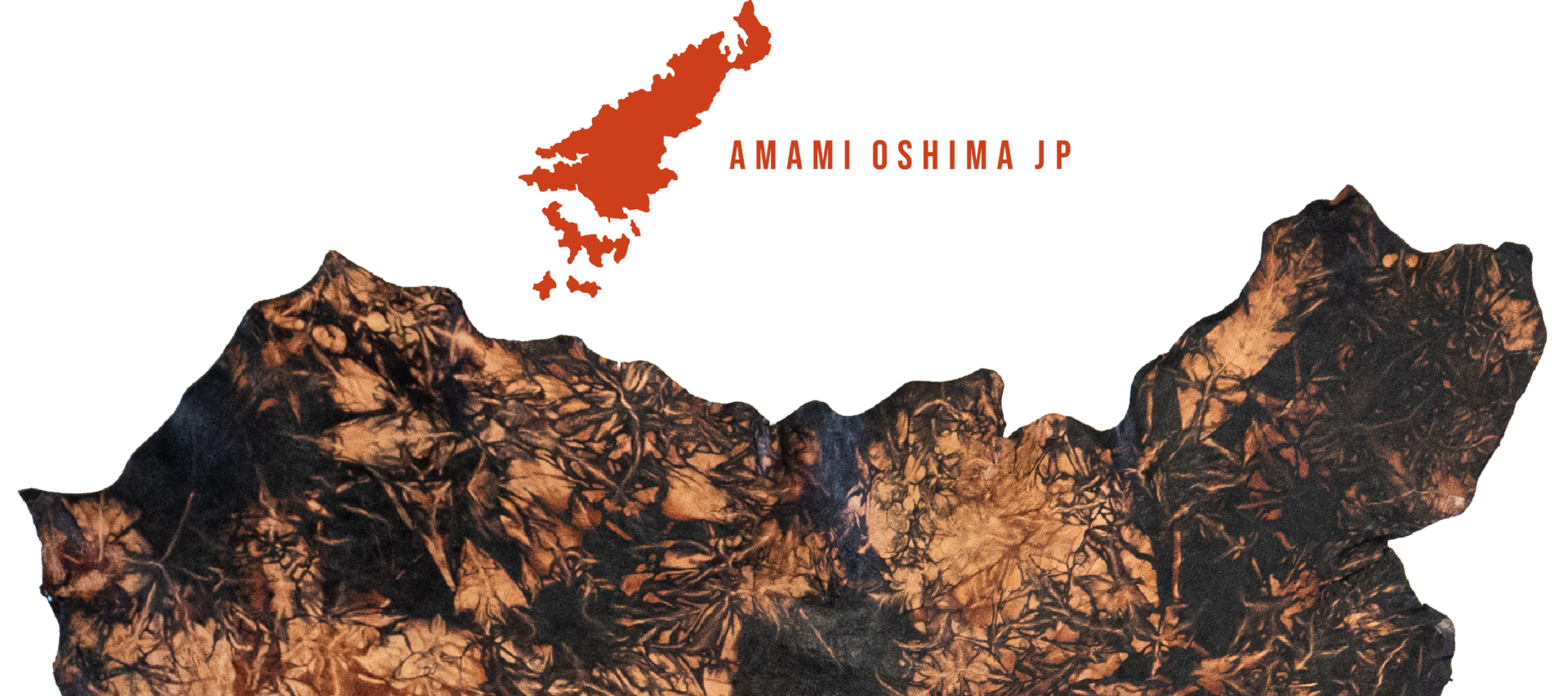THE Collaborative work with the Mud Dyeing Artisan on Amami Oshima
For our first collection, we encountered the ancient dyeing recipe of Amami Oshima,
and through conversations with the locals,we were able to learn about their culture, history, and traditions.
Through this collaborative work, we have expressed the harmony between nature, tradition,and pride
in horse leather.
This is a revolutionary and unique leather collection that SHINKI-HIKAKU created together with them.

Vegetable (mimosa) tanned horsehide is dyed by “Mud Dyeing”, an ancient dyeing recipe originating from Amami-Oshima
which has been handed down from about 1,300 years ago.
After dyeing in Amami-Oshima, the horsehide is given a final finish including a process to control color fading.
The tannin contained in Techigi (Sharimbai/Rosaceae) reacts chemically with the iron-rich mud in Tatsugo, Amami Oshima, giving the horsehide a unique black color that cannot be expressed by ordinary dyeing methods.
This process is similar to Oshima Tsumugi, the most traditional and expensive dyeing technique in Japan.
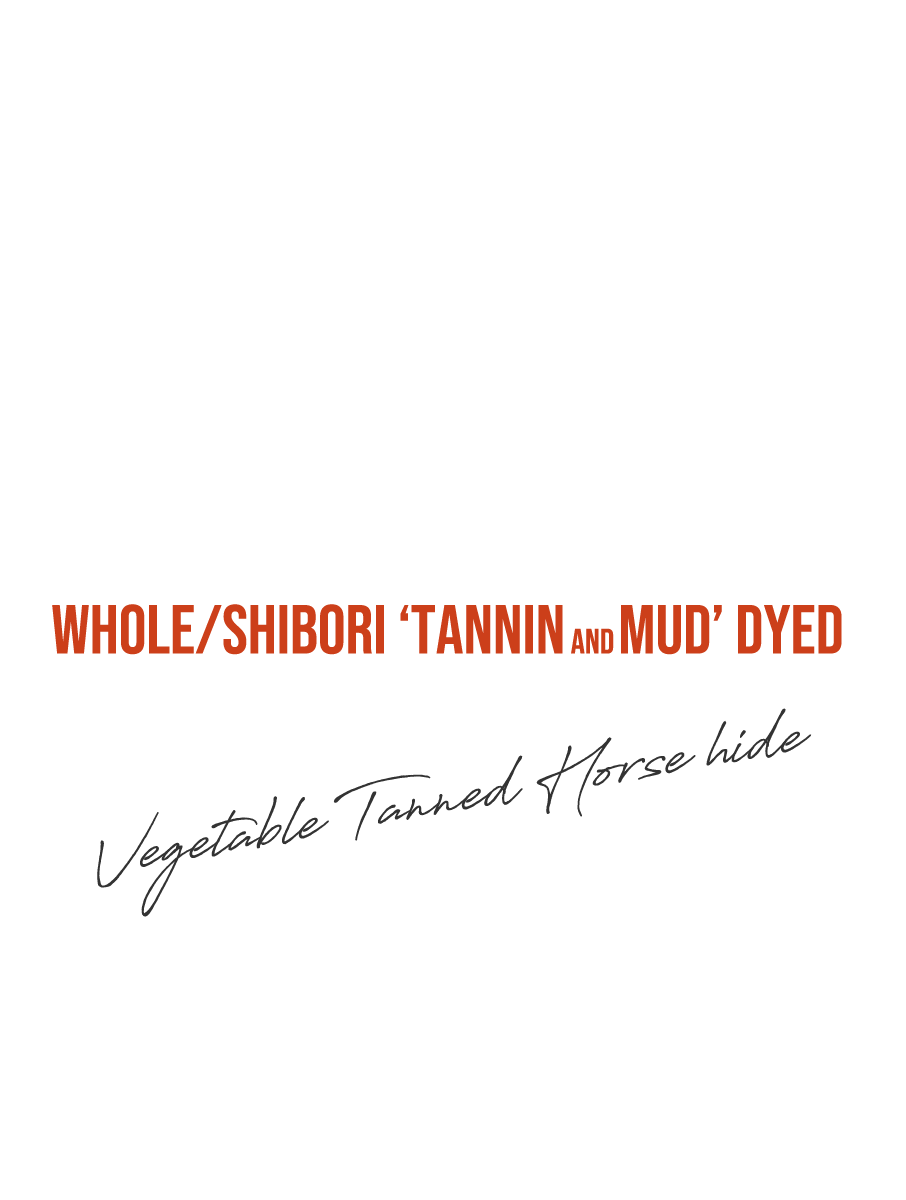
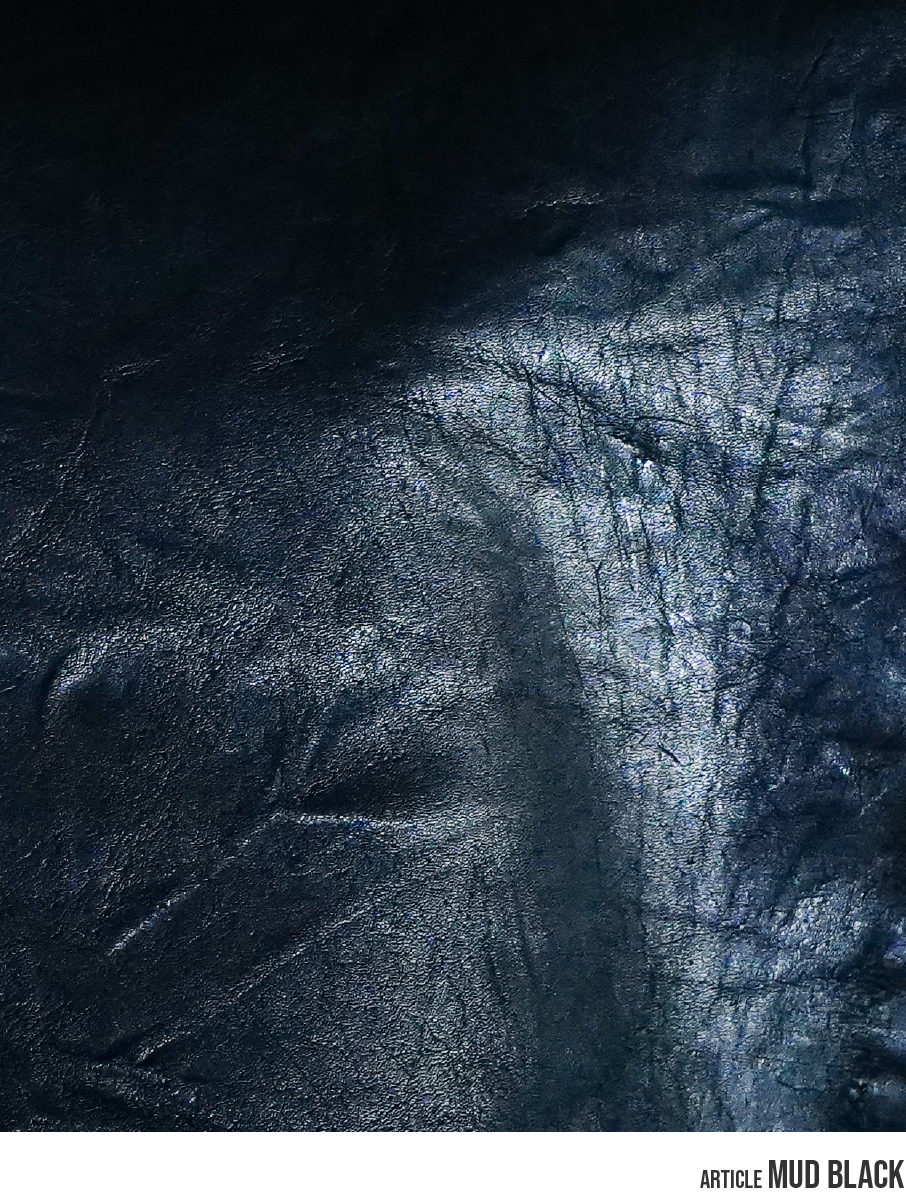
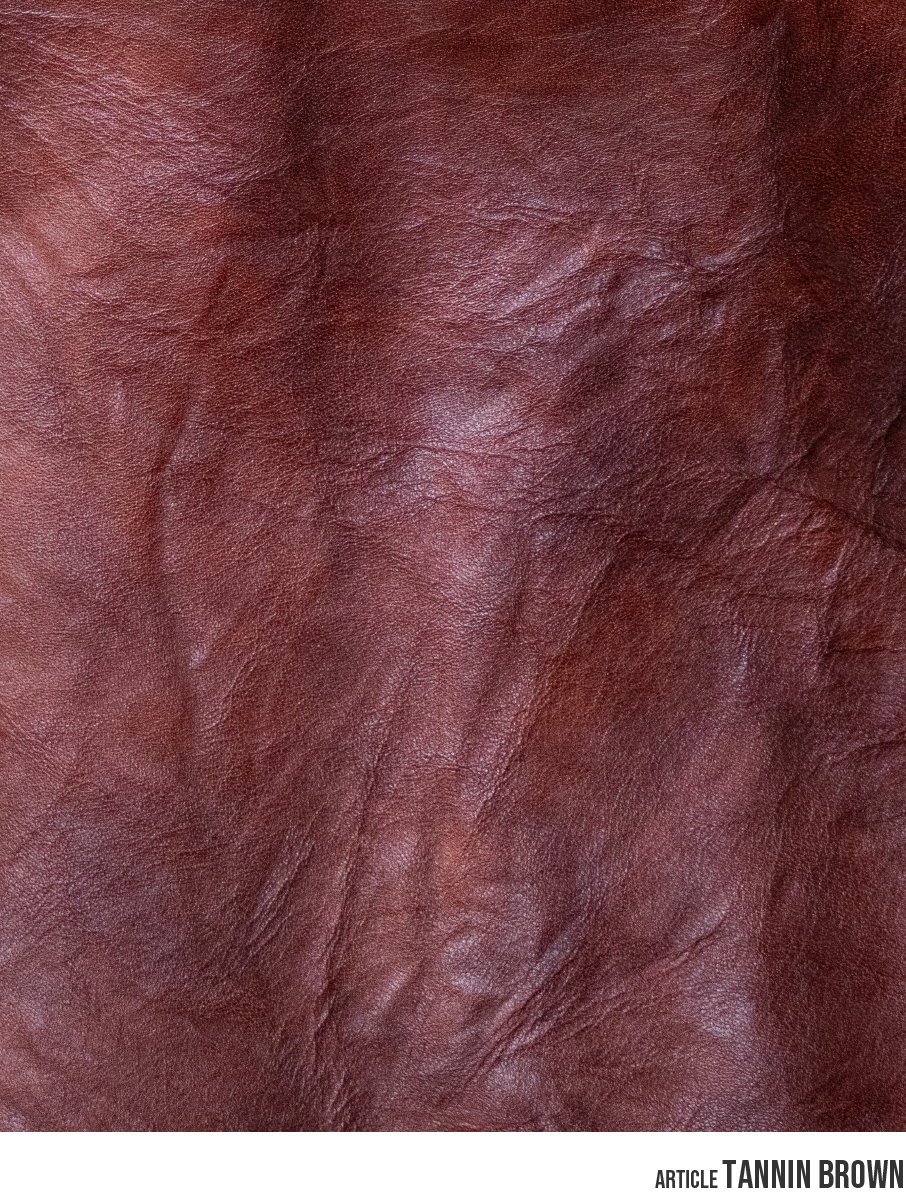
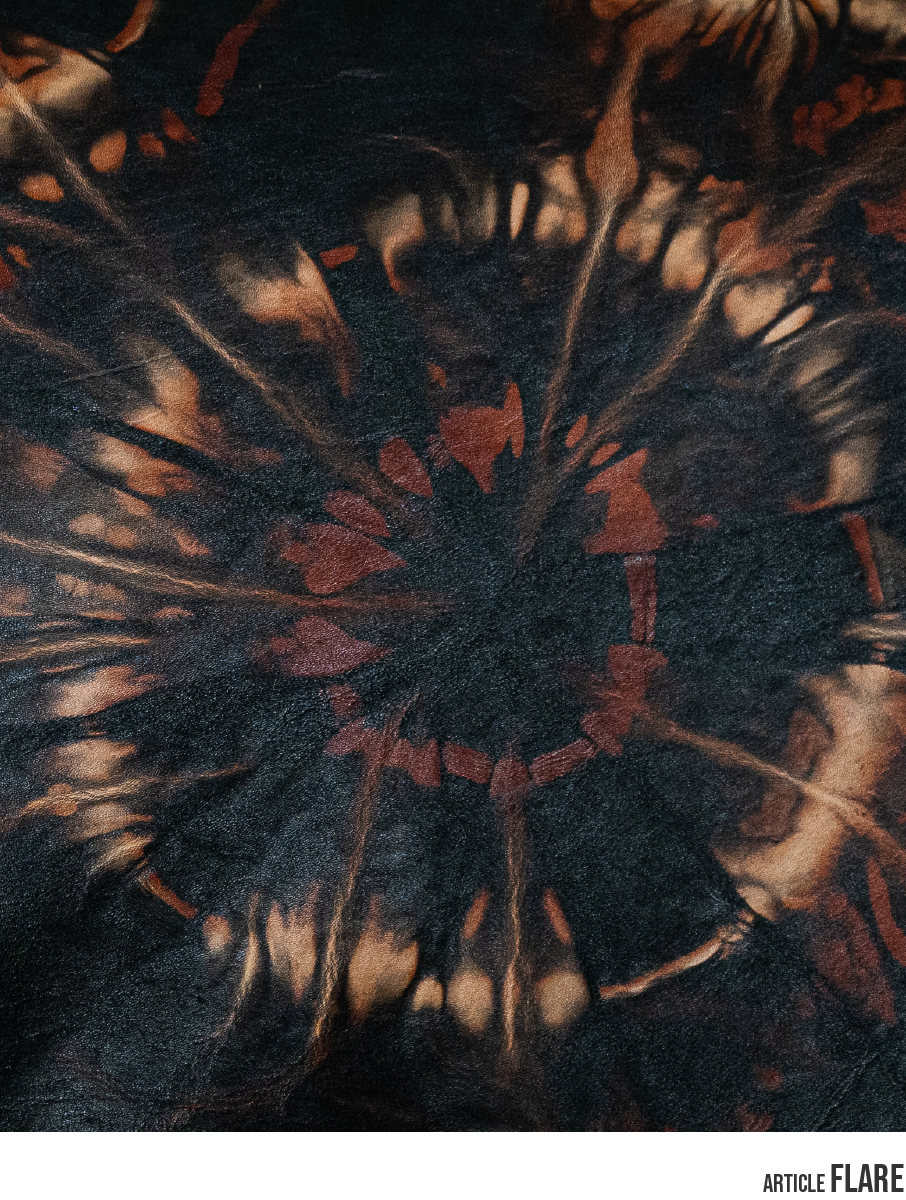
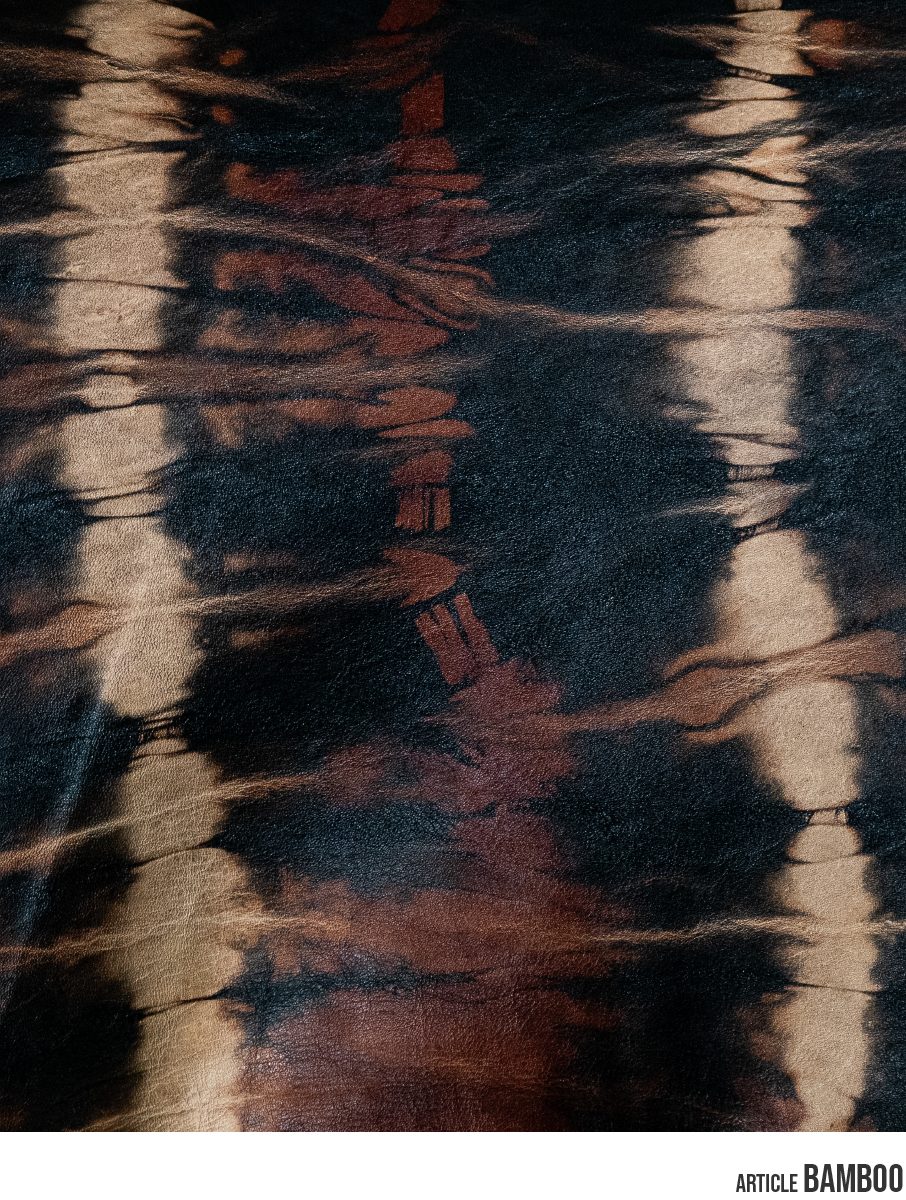
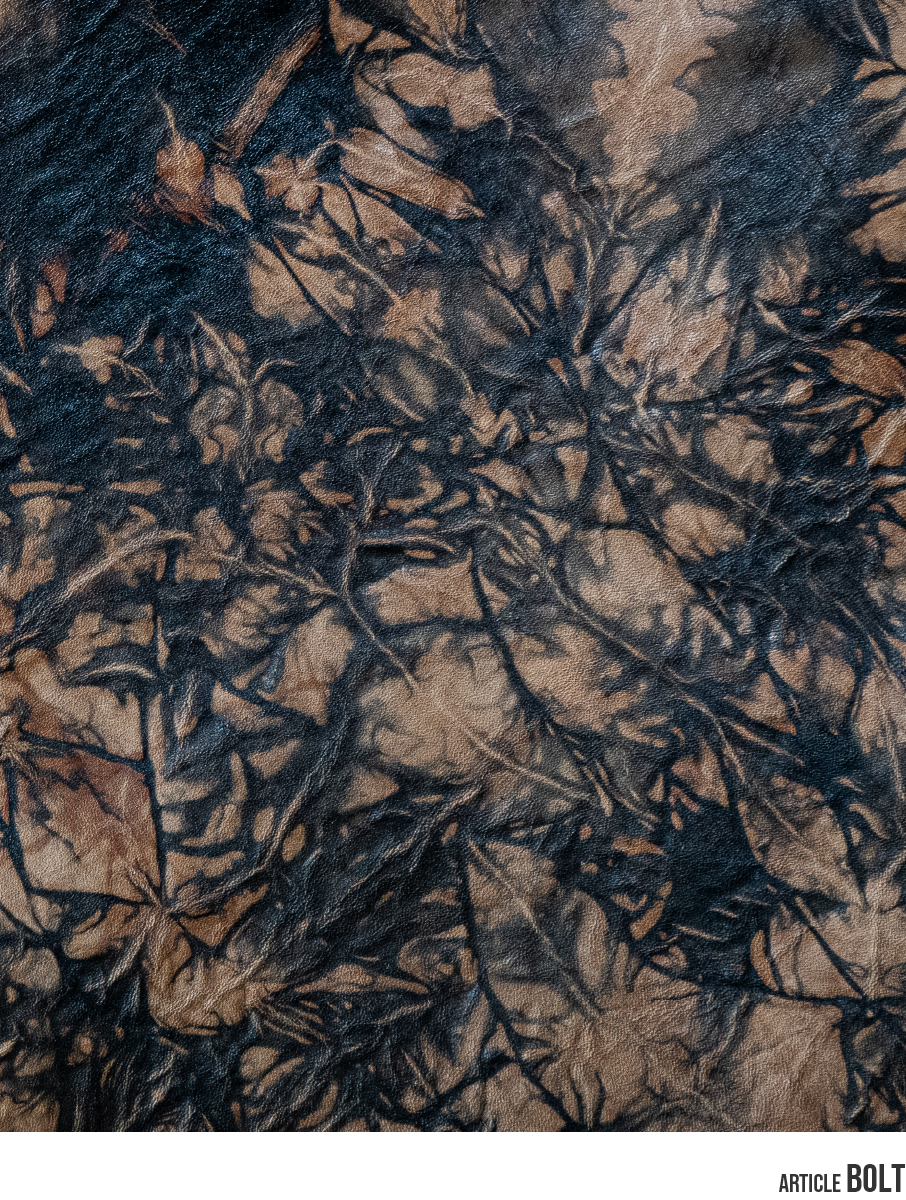
To further express their originality, they used the traditional tie-dye SHIBORI technique to create three different patterns on horsehide.
For the collection of VISIONARIES SHINKI-HIKAKU, we met and talked with the Amami Oshima ancient dyeing recipe and were able to rediscover the culture and history/traditions of Japan.
We shared their pride and future-oriented mindset, and we both put our best techniques and efforts to create the best horsehide.

Precautions for Handling the Leather
- The smell is different from general SHINKI-HIKAKU horse leather.
- Due to the large particles of mud and boiled water dyes, the coloring does not extend into the inside of the leather.
- The surface has been color-fastened, but there is a possibility of color fading due to strong friction or exposure to moisture.
- The reverse side of the leather has not undergone color-fastening treatment and may fade.
- This leather is vegetable-tanned and dyed using natural materials, so please avoid exposure to moisture and UV rays.
- The placement, size, and degree of staining of horsehide patterns using the SHIBORI technique varies from piece to piece.
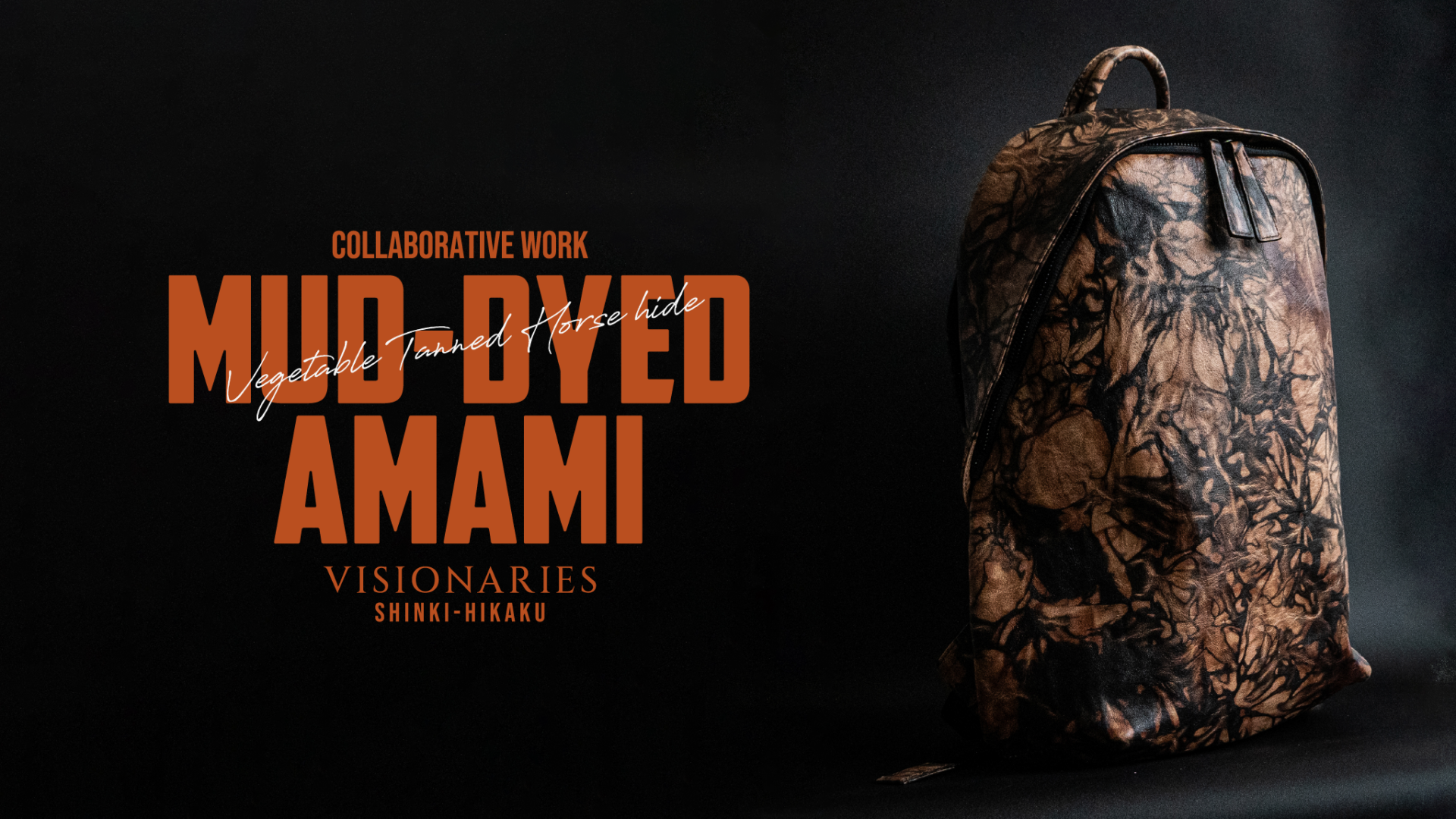
Contact Information for Ordering and Sales Management
Please direct all inquiries regarding inventory availability and other matters to the sales agent listed below
Sales Agent Ayumi Hirabayashi
visionaries@shinki-hikaku.jp

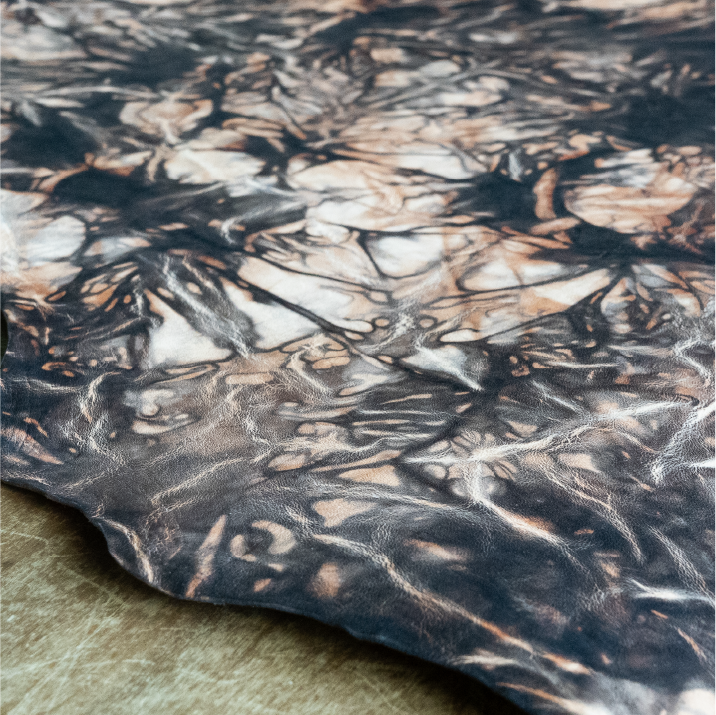
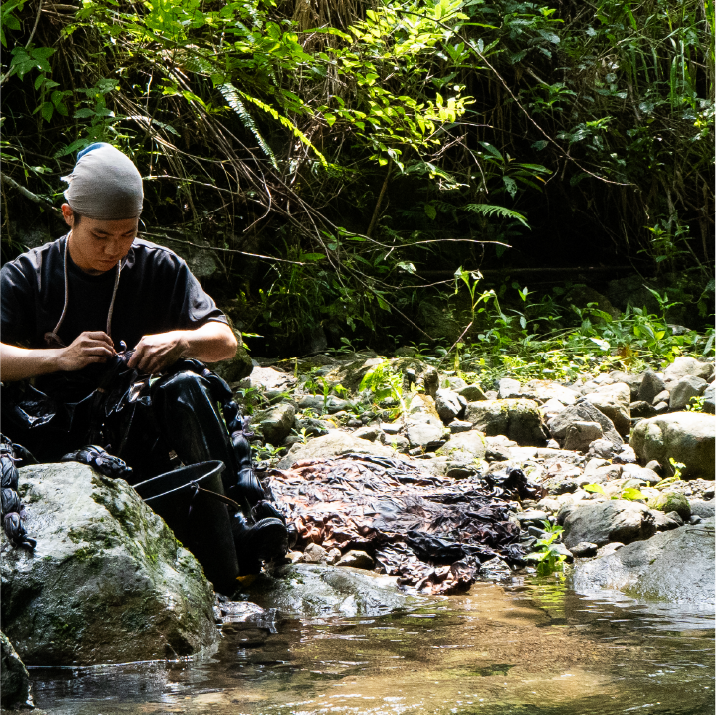
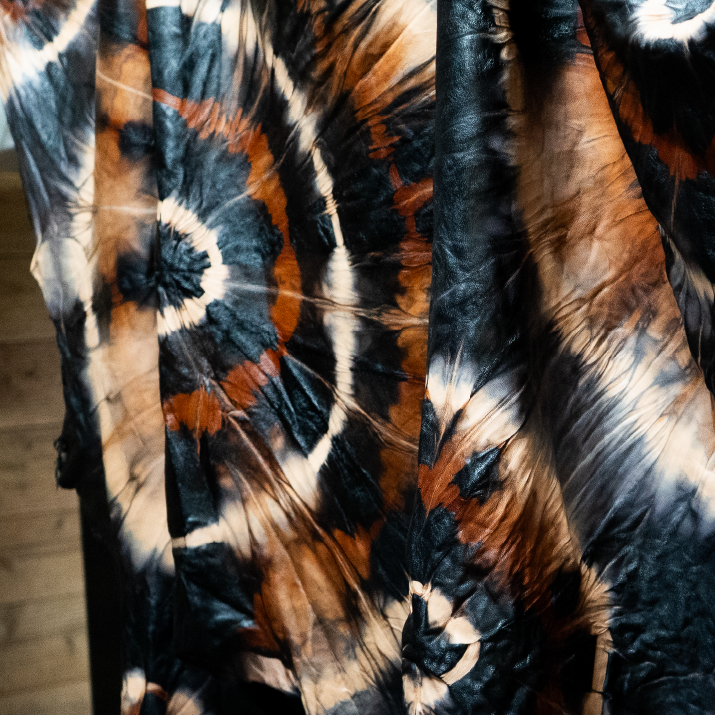

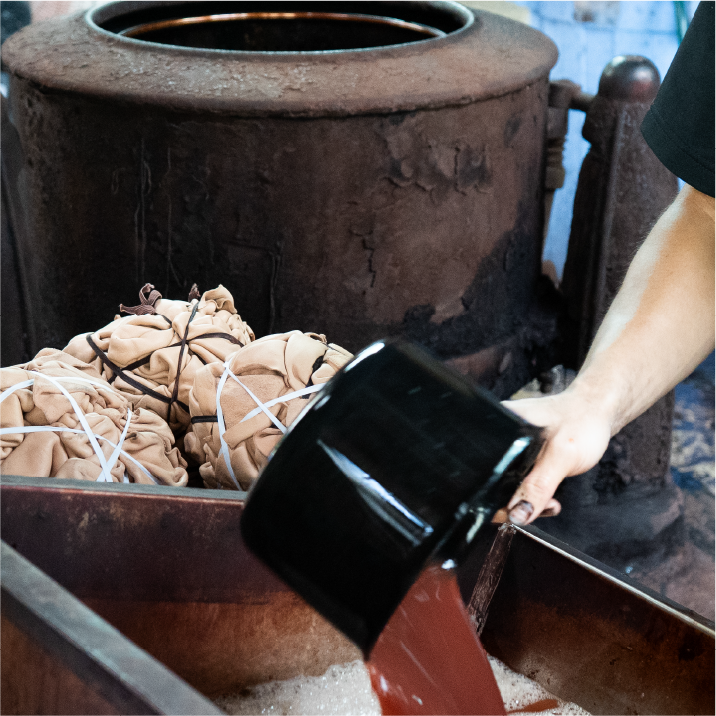
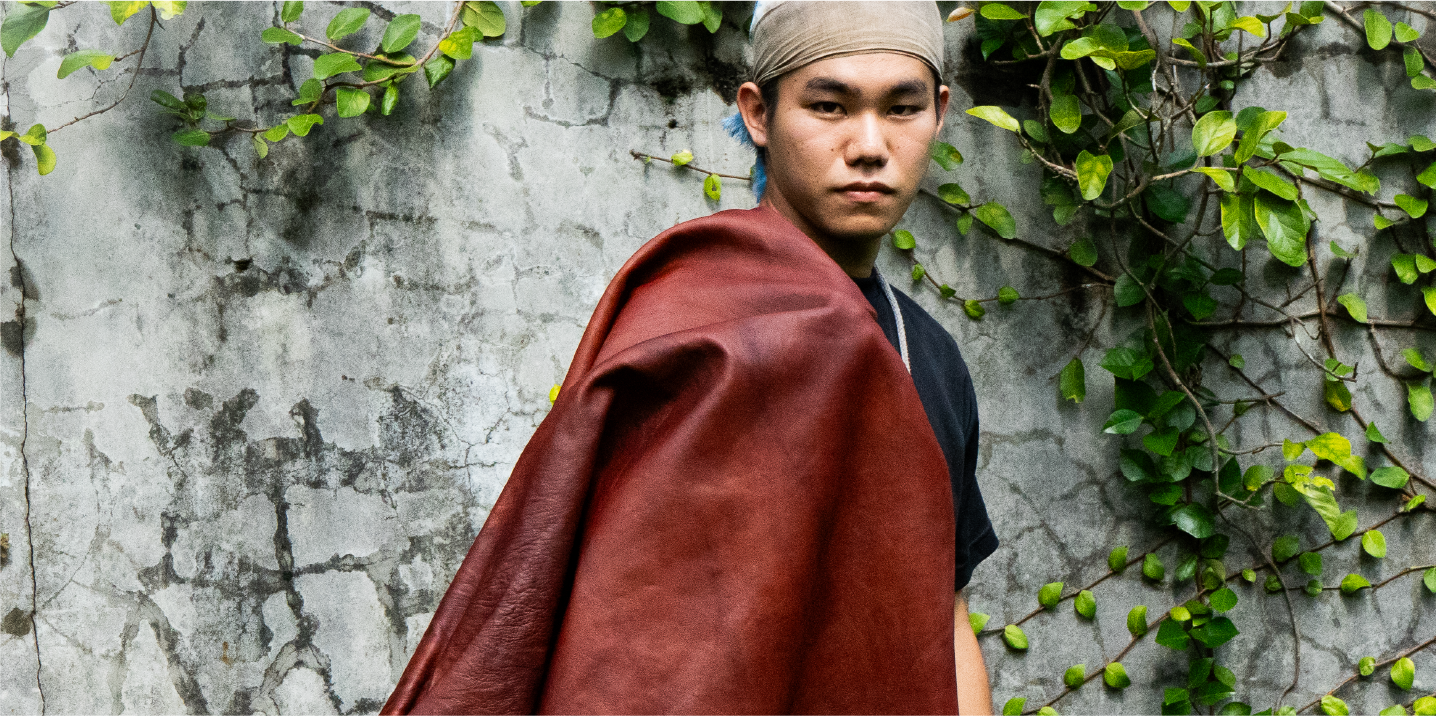
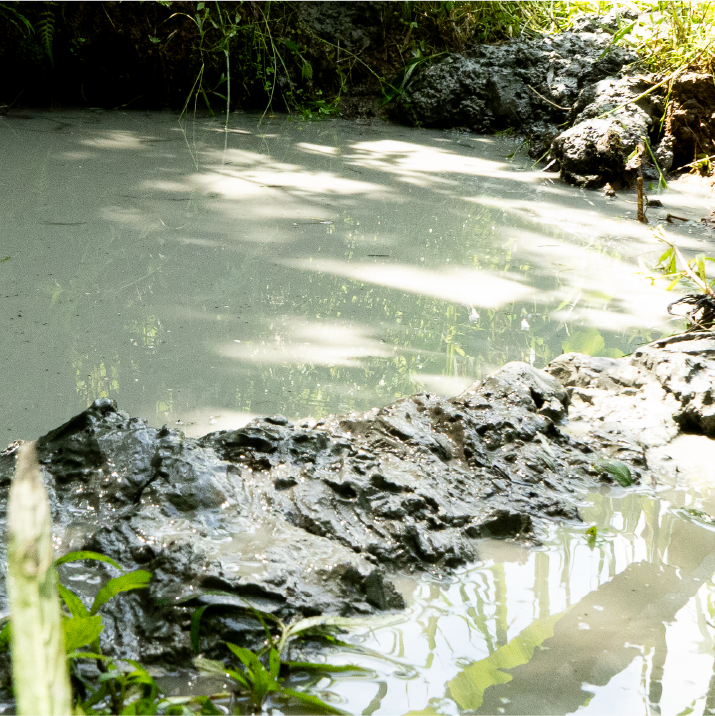
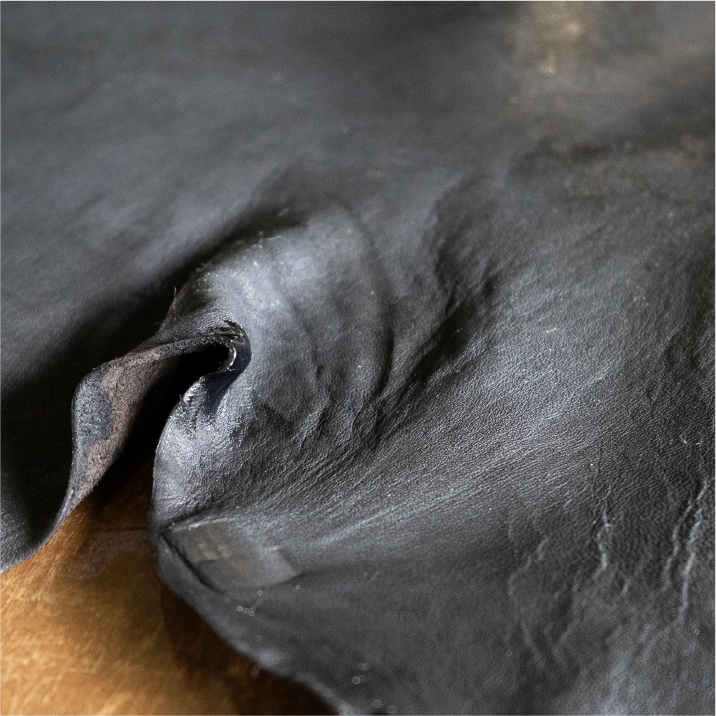
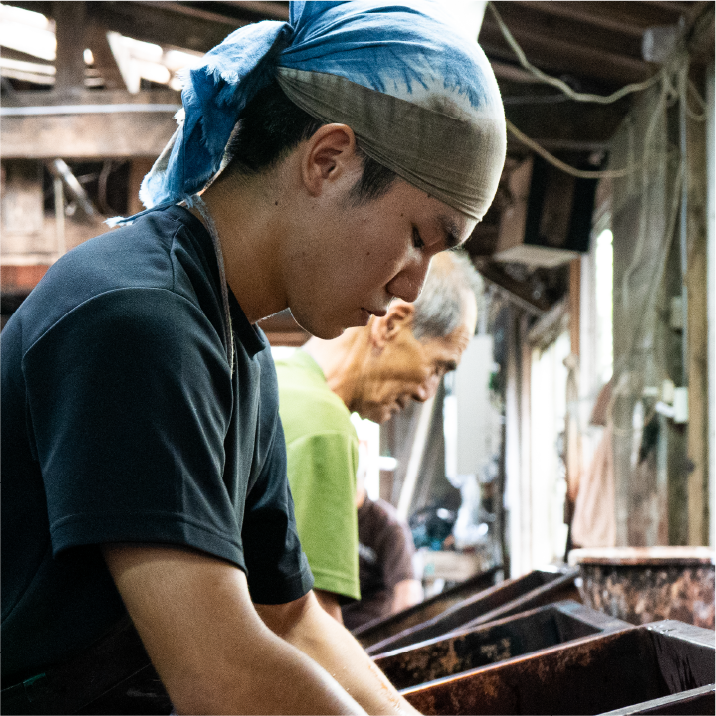
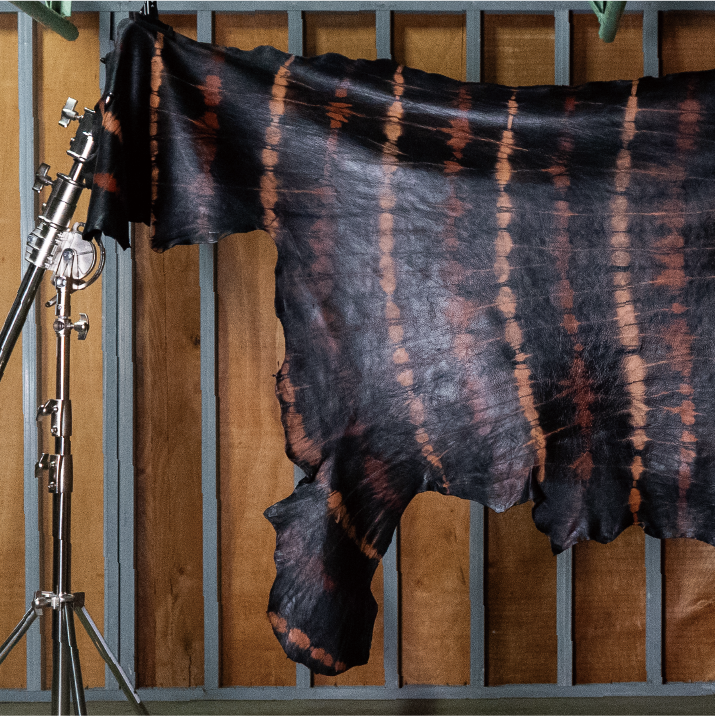
SPECIAL THANKS
Takahiro Yamamoto
Masahide Maeda
Masaaki Abe
Miwa Sakamoto (Sankei Sangyo)
